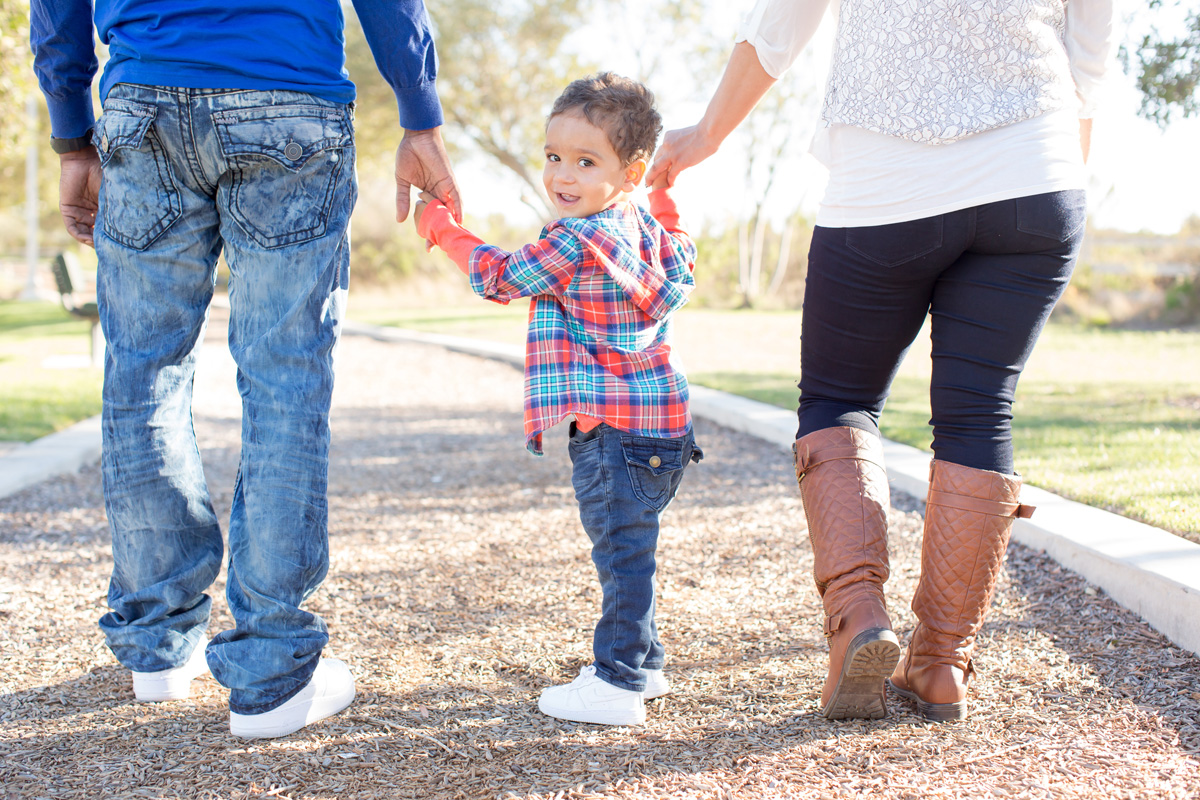Adopting a Child? Create a Nurture Plan!
Adopting a child is a common, loving way to create a family. Babies, who are adopted, whether just after birth or later in their lives, may feel a loss. Many babies appear to accept the loss with minimal difficulty in routine, temperament, development, and overall happiness. In older babies, the loss may be profound and affect their development and lives for years to come. Don't despair, because you have the ability to provide extra care and comfort.
All babies, whether adopted or not, need affection and tender loving care (TLC). It's best to expect that any baby born via adoption may need more TLC, because of his or her loss and change in environment. For this reason, you can create a Nurture Plan for your baby or toddler. This plan for enhanced nurturing applies to any baby or toddler!
A Nurture Plan is a commitment that you make to your adopted baby, to ensure that he or she receives extra nurturing in the first year of life and beyond. Your baby learns to trust by having his or her needs taken care of.
Here are ideas to develop a nurture plan for a baby or toddler who is adopted.
Enjoy skin-to-skin contact several times per day. The best skin-to-skin contact involves the baby undressed down to the diaper and in contact with skin on her parent. The father is shirtless or mother in a sports bra or shirtless. Skin-to-skin contact does not have to be during times of distress, but you will find that many babies relax with skin-to-skin contact when distressed.
Use music as a soothing environmental supplement. Music brings an element of relaxation in all environments. Ensure that the music is not harsh. Soft music can played for you and your baby’s enjoyment.
Don't allow your baby or toddler to “cry it out.” Your baby should not be left crying unattended whenever possible. In other words, do not use the “Cry It Out” (CIO) method to help her go to sleep. CIO could cause more distress than necessary for your newly adopted baby.
Nurture all crying whenever possible. This sounds like a large task. Babies often need to cry to communicate. It's impossible to stop crying if it is necessary as a form of expression. Babies should not be forbidden from crying. If your baby is crying, she needs to be tended to. If you are having trouble figuring out why she is crying, hold her and engage her as much as possible. If she stiffens her back as if she wants to be put down, that is okay. Sit her next to you. Then sit quietly to let her know you are present. Make eye contact and give soothing words.
Don’t panic if you are in the bathroom or elsewhere and your baby starts to cry. She should be in earshot, so talk to her until you can reach her.
Co-sleeping safely. Co-sleeping safely means a separate sleep area for the baby, but your baby is next to you. Your choices are a bassinet, co-sleeper to attach specifically to the bed, or a co-sleeper (box) placed in the bed. This choice is for parents who don’t mind waking up with their baby, as babies who are in the same room will often wake up more at night for nurturing.
Late bottle-feeding. Babies who are adopted after the newborn period may benefit from late bottle-feeding. Late bottle-feeding means continuing to bottle-feed after age one year. Prolonged bottle-feeding is common in Brazil, where babies are weaned slowly from the bottle. Brazilian mothers are not in a hurry to get their babies off the bottle, they enjoy the experience of feeding their baby with extended nurturing.
Why do some parents (like Brazilian mothers) like to feed their babies from a bottle as long as they are able? Bottle-feeding allows the baby to suckle, which stimulates important regulatory hormones. These regulatory hormones can help the baby relax and feel more soothed. Also, while bottle-feeding, the baby is making eye contact with his parent.
Brazilians are known to be pretty relaxed parents who like to take their time giving extra physical affection, like kisses (beijos) to their babies. The social aspect of nipple feeding a baby is irreplaceable. You are giving and the baby is receiving. This is a great way to form trust. If you plan to late bottle feed after age one year, gently brush their teeth after each bottle to prevent cavities. Also, ensure your baby doesn't overeat. Your pediatrician can help you regulate your baby's formula or milk intake.
Be a chatty parent. Extra talking, extra eye contact, and conversation will go a long way toward building your relationship. This applies to all ages. If you see that your baby wants to rest or is agitated by too much conversation, be thoughtful and stop talking. Otherwise, chat in your regular voice while she is awake and alert. This helps her speech development and ensures she knows you are present and engaged.
Unplug. Attach your cell to your charger and turn off the computer and television while you are tending to your baby. You will receive greater enjoyment and bonding time and so will she. Sure, it is OK to use media, just consider using it at more appropriate times, such as when the baby is sleeping.
Be open to using a pacifier. Just like with nipple feeding, babies enjoy suckling. Many want to suckle between feeds, and a pacifier is a good way to do so. Pacifiers are now known to be associated with a reduction in SIDS, and are safe to use.
If your baby is over one month of age at adoption, a pacifier may still be introduced. Find one type of pacifier. An orthodontic pacifier will typically work best after one month. When your baby is calm or happy, try the pacifier several times per day. Do not initially try the pacifier when your baby is crying. She may not understand why the pacifier is in her mouth. You may have the perception she does not like the pacifier. This may not be the case. Sometimes, it takes a week or two to determine if your baby truly wants to suck on a pacifier!
Hand feed with care. Babies who are four to eight months tend to be fed with the spoon. Make sure you are present, emotionally, for this stage. Make good eye contact and engage your baby while eating. Examples are the cliché that many of us have seen—“Open up the hangar, here comes the airplane.” Laugh and have fun. Laughter is contagious and an excellent way to build trust with your baby.
As your baby gets to the solid feeding age around nine months, you will want him to learn to feed himself with his hands to work on self-confidence, fine motor skills, and oral motor development. At this time, though, give him pieces of your own safe food to eat while you are eating. Periodically feed him bites healthy food with your own hands, from your plate. Continue this well into the toddler years. Do not force him to eat from your hands, but offer and allow him to take the food. Your baby needs to build independence, but he loves to receive. Children, especially those who are adopted later in infancy, need to understand that they are able to receive from you and that you will take care of them now and forever.
Tip: Hand feeding shouldn't be at every meal, since he needs to learn to eat on his own for healthy eating habits.
A special thank you to Mrs. Cacilda Ferreira, Poços de Caldas, Minas Gerais, Brazil.
For more information:
Should Your Baby “Cry It Out” to Sleep?
Is Hand Feeding Your Baby Chunky Foods Acceptable?
Should You Co-Sleep with Your Baby?


